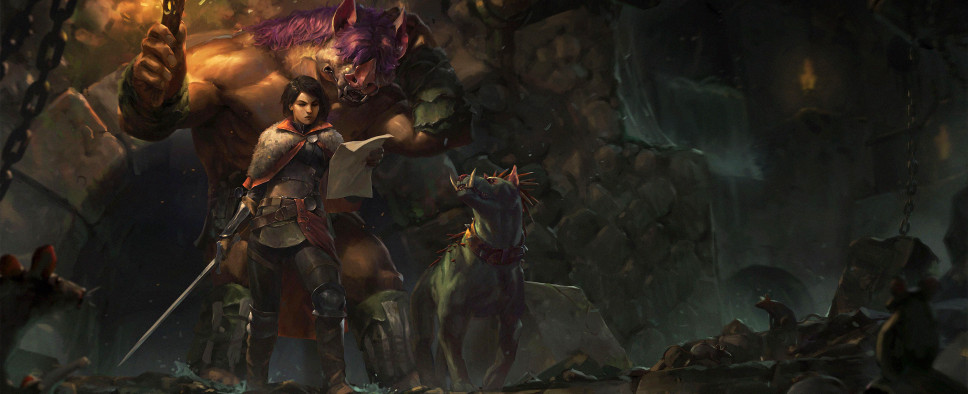Fell Seal: Arbiter's Mark Review
-
Category: ReviewsHits: 10369

Article Index
Introduction
Developed by 6 Eyes Studio, Fell Seal: Arbiter’s Mark is described by its developers as a turn-based tactical RPG with a focus on storytelling and strategic battles. What this actually means becomes obvious the moment you see the game, as it wears its inspirations on its sleeve. Fell Seal is positioned as a spiritual successor to such games like Final Fantasy: Tactics and Tactics Ogre, which were essentially the Japanese counterpart to Jagged Alliance and X-Com back in the day.
Now, I think I should mention here that when I tried playing them, the console-centric approach of the above-mentioned Japanese games felt incredibly limited and even constricting to me. It’s safe to say I wasn’t a big fan. But seeing how the western branch of the genre stagnated over the years and was eventually streamlined into something barely recognizable, I was open to giving its main competitor another shot with Fell Seal.
Story and Gameplay
The basic premise of Fell Seal is extremely simple. Basically, it’s a JRPG without any of the boring parts. So, forget about endless grinding, annoying random encounters, a combat system where your characters do squats on the edge of the screen while you tinker with some menus, or a vast open world with no road signs but one very specific place you have to go to advance the story.
In Fell Seal, you get a reasonably short dialogue-filled cutscene, then you get a hand-crafted turn-based combat encounter where your characters do battle on an isometric battlefield. When that’s done, you get to upgrade your squad and repeat this loop. Apart from that, you also have occasional bonus story events and the so-called patrols.
While all the story missions are represented by a node on the game’s overworld map, after completing them, you can revisit those locations and fight some random monsters there. You do this mostly to level up some extra squad members, advance the game time while your main guys recover from injuries, or to get some loot you missed your first time through that particular map.
The game’s story is also very much of the JRPG variety, which means you don’t get to control it in any way. You’re just a passive observer, watching it gradually unfold through a series of brief dialogue boxes.
Fortunately, the game wasn’t actually made in Japan, so its levels of over the top melodrama, teen angst, and spiky hair are relatively manageable. At its core, it’s your run of the mill fantasy tale of an ancient evil returning, schemers of all shapes running wild, and some chosen individuals rising to the occasion.
The story does feature some side quests and even a fairly well-hidden sequence of things you have to do in order to get an alternative ending, but it seems to have no idea when it should end and by the very end, manages to mostly fall apart.
However, the actual moment to moment writing possesses a certain quality that makes things pretty engaging and fun. I guess it’s just very earnest in what it’s trying to do, and I can definitely appreciate that.
As you might imagine, a game like this supplies you with some pre-made characters that are all thankfully pretty good at what they do. However, you can also expand your character roster with a number of mercenaries. You can freely customize these mercs and if that’s your thing, Fell Seal features a pretty robust character editor for an isometric game.
As your squad grows in size, it can actually become fairly unwieldy to individually upgrade all your units and supply them with appropriate gear after every battle. To help you with that, the game has a button that automatically optimizes equipped items, but as far as I’m concerned, using it is admitting defeat. Why even play the game if you don’t actively engage with its systems? I just wish that it had a better UI, one that wasn’t created with a controller in mind.
Rushing slightly ahead, I want to say that overall, I had a lot of fun playing Fell Seal, but all of that fun happened mostly despite the game’s horrendous controls and unwieldy UI. Whether you’re using a keyboard and mouse or a controller, by the time you’re done with the game, chances are you’ll be feeling mighty frustrated by its controls.
Controlling a game where you have over a dozen characters, as well as robust class, skill and crafting systems, without context-sensitive mouse controls is a huge pain. For example, in order to unequip a piece of gear, you have to mouse over it, and then press T. And don’t even get me started on all the right-clicking you will be doing just to back out of seemingly endless menus and sub-menus.

